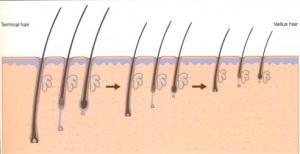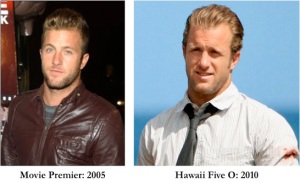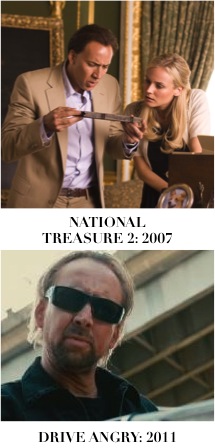 If you are suffering from Male Pattern Baldness (MPB), you can rest assure you are not alone. This is a very common type of hair loss in men; roughly 1 in 3 men over the age of 35 will get it. MPB usually starts with a receding hairline at the front followed by diffuse thinning in the mid scalp.
If you are suffering from Male Pattern Baldness (MPB), you can rest assure you are not alone. This is a very common type of hair loss in men; roughly 1 in 3 men over the age of 35 will get it. MPB usually starts with a receding hairline at the front followed by diffuse thinning in the mid scalp.
Male Pattern Baldness does not look good on anyone, even Matthew McConaughey! So what can you do to look and feel better? That’s a million dollar question and often times feels impossible to answer.
You should schedule a consultation with a hair restoration physician. At your consultation you discuss your type of hair loss, treatment options, and what would work best for you. Keep in mind none of the treatments listed below will have an instantaneous effect. Hair Restoration requires patience because it can be a long process. Patient options include medical and surgical treatments such as:
- Medical Treatment- Finasteride and Minoxidil
- Low Level Laser Therapy
- Hair Restoration Surgery
Meanwhile, what can you do to look better with your present predicament? Here are 4 things you should avoid …
1. Avoid combing your hair straight back because this will expose the forehead even more. Although you may cover some bald spots, you will attract more attention to the receding hairline, which always make you look older.
2. Avoid using gel on your hair because gel clumps your hair together and reveals the scalp even more. More exposed scalp makes you look even “balder”, for a lack of a better word.
3. Avoid growing your hair longer at the back to try and make up for what’s missing on top. This strategy messes up your hairstyle and gives it an unbalanced look. Worse still, it draws even more attention to the scalp and the baldness.
4. Avoid the “comb over” or “cover up”. This is the typical look of men with MPB. The hair is grown longer on one side of the head and combed over the bald area to cover up any open spaces. Unfortunately, this style is vulnerable to even the slightest breeze and it’s just plain ugly.
Now for some Dos…
1. See a good hairdresser!!! There are three excellent hair styles to keep people from focusing on your hairline.
 * The Ceaser Haircut- It has short, even hair on either side of the head and on the back of the head with bangs hanging down over the front. For a haircut with layers, bangs are necessary since they hide your hairline and will draw attention away from any hair loss.
* The Ceaser Haircut- It has short, even hair on either side of the head and on the back of the head with bangs hanging down over the front. For a haircut with layers, bangs are necessary since they hide your hairline and will draw attention away from any hair loss.
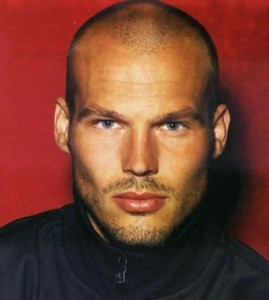 * The Buzz- A buzz cut is one of the best haircuts for a receding hairline since it makes your hairline less noticeable. This is because a buzz cut is a smooth, even cut, extremely close to the scalp, so there is less of a disparity between your hair and bald spot. A burr cut is the best of the buzz cut styles, since it is the closest to your scalp. For a burr cut, the hair stylist will shear your hair to one-eighth inch away from your scalp, or closer.
* The Buzz- A buzz cut is one of the best haircuts for a receding hairline since it makes your hairline less noticeable. This is because a buzz cut is a smooth, even cut, extremely close to the scalp, so there is less of a disparity between your hair and bald spot. A burr cut is the best of the buzz cut styles, since it is the closest to your scalp. For a burr cut, the hair stylist will shear your hair to one-eighth inch away from your scalp, or closer.

* The Shaved Head- If you are willing to completely part with your hair, and you feel confident in your head shape, a shaved head is one of the most attractive haircuts for a man with a receding hairline. A completely bald head leaves no sign of a receding hairline, so you’re left with a trendy, clean haircut that many women are attracted to. Shaved heads must be maintained like other sensitive skin areas, such as the face. Be sure to moisturize your head with soap and lotion, and put on sunscreen when the sun is out to prevent burning your scalp. Your head should be shaved twice or three times a week to keep up a perfectly smooth haircut.
2. Use mousse and conditioner to get more natural looking, fluffy hair. This will give your hair more “body” and a fuller look.
Finally, whatever it is you choose to do, be happy. A happy bald man definitely looks better than a grouchy one!

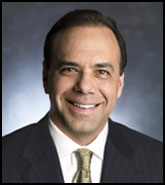

 you during a consultation. Someone who accompanies you may remember something that you missed or forgot.
you during a consultation. Someone who accompanies you may remember something that you missed or forgot.











